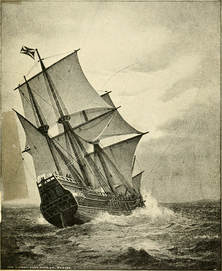 I don’t really know anyone on my father’s side of the family. He didn’t talk much, and when he did, it was never about his family. What I knew was limited to weird bits about step-brothers, an alcoholic mother and years spent bouncing around through Illinois’ foster care system. It sounded bleak, so I never really pressed the issue for fear of drumming up some unnecessary pain. As kids, my siblings and I met his cousin once as she was passing through our town. Or was it an aunt? I really can’t remember. I was 10 years old and the moment so fleeting and so long ago that the memory is now hazy. Thanks to Facebook, I’ve connected with another family member – Ruby, my father’s cousin. She is a wealth of information about his past, supplying me with great pictures of his parents and other relatives, many of whom died before I was even born. My grandfather looks very tall in the pictures, which helps to explain my hulking 6-foot-8-inch frame. But that’s it. A random visit from someone I can’t remember and a Facebook friend who sends the occasional picture serve as my only connections to his past. He died a few years ago, right around the time consumer-based DNA testing was becoming readily available in the United States. 23andMe and a smattering of other DNA ancestry services are now part of our everyday lexicon, luring us with the promise of a deeper sense of genetic heritage in exchange for a little saliva, $150 and the ability to store our DNA profile on some random computer in California. As a researcher and writer, the offer to have more data was enticing. But if I’m being honest, it really came from a longing to learn more of the truth behind what little I already knew of my dad’s story. Unfortunately, what I found told me very little about his life. What it did tell me was that my life was bigger than the DNA contributions of one person, painting a bigger picture of a vast lineage, a family journey from places such as England, Ireland, Germany and Switzerland. Buying into the DNA hype comes with risks. I get it. For me, it seemed like the secondary reward was knowing more about my genetic health, wellness traits and other reports these services provide. What I didn’t expect was a connection to a possible paternal relative. “Open Sharing,” or connecting with DNA relatives who use the service, connected me to a third or fourth cousin (we share a great-great grandfather on my father’s side). She reached out, asking questions to see if we shared other connections. I didn’t learn more about my father from the DNA sample, but maybe I’ve made a connection to his past and my family that wasn’t there just a few short years ago.
0 Comments
Your comment will be posted after it is approved.
Leave a Reply. |
AuthorDr. Adam C. Earnheardt is special assistant to the provost and professor of communication in the department of communication at Youngstown State University in Youngstown, OH, USA where he also directs the graduate program in professional communication. He researches and writes on a variety of topics including communication technologies, relationships, and sports (with an emphasis on fandom). His work has appeared in Mahoning Matters as well as The Vindicator and Tribune-Chronicle newspapers. CategoriesArchives
July 2023
|
 RSS Feed
RSS Feed